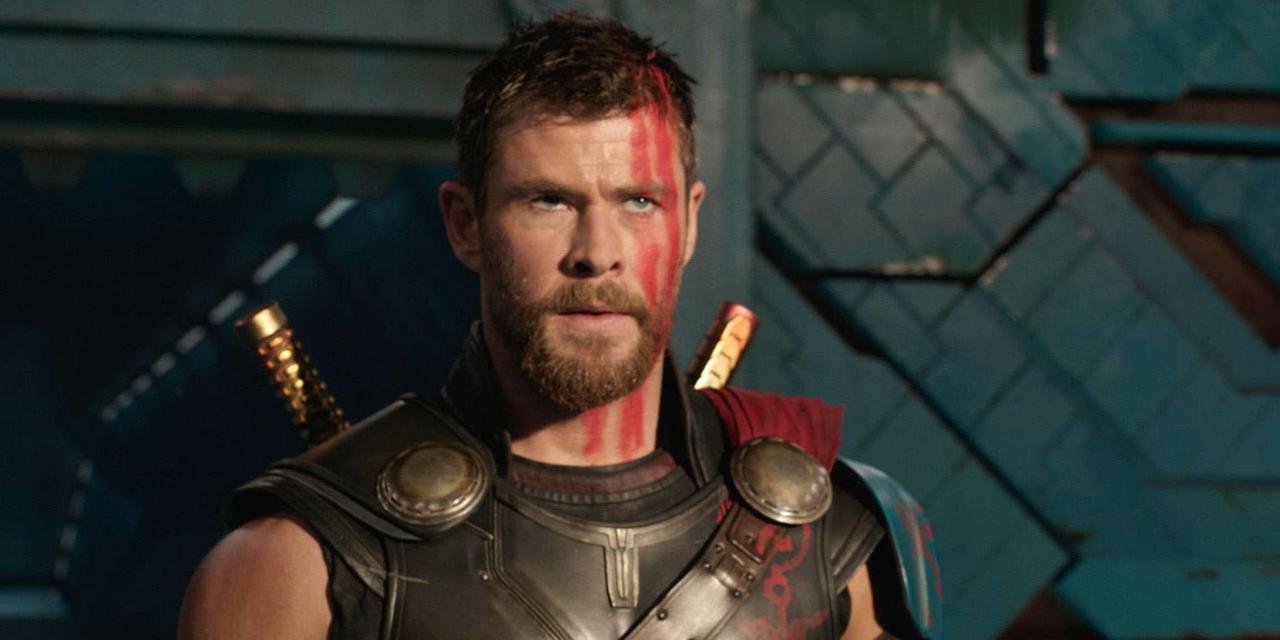
MPAA Rating: PG-13 | Rating: ★★★
Release year: 2017
Genre: Action, Comedy, Superhero Director: Taika Waititi
Is it ever okay to laugh at death?
This was the question stuck in my mind as I waited for the obligatory Marvel end-of-credits scene after Thor: Ragnarok. Many people/aliens/gods die in the thunder god’s return to the big screen—and I laughed a lot.
Right from its opening scene, Ragnarok is a colorful, campy sendup of the superhero genre, even as its storyline and thematic elements are decidedly morbid. Thor (Chris Hemsworth) greets the audience in voiceover from a cage in the hellish domain of the fire demon Surtur. He’s chatty and smug, joking about Surtur’s appearance before the expected CGI-infused battle begins. This scene sets the tone for the remainder of the film: Even in the midst of hell itself, this is all meant to be a good time.
New Zealand director Taika Waititi’s previous two films, What We Do in the Shadows and Hunt for the Wilderpeople, were strong, smart comedies with similarly dark humor about issues of mortality. Shadows is a mockumentary following the undead escapades of a group of vampires living as flatmates. Wilderpeople is essentially a remake of Pixar’s Up, as both stories depict a cantankerous man’s journey of grief following the tragic death of a spirited spouse as he hikes around a jungle with an unwelcome boy.
Following suit, much of the plot (and the humor) in Ragnarok centers on the deaths of individuals and how people respond in the wake of death. Death is even personified in the goddess of death, Hela (Cate Blanchett), the elder sister of Thor and Loki (Tom Hiddleston) who appears after the sudden loss of their father, Odin (Anthony Hopkins). Hela is a formidable opponent, and it’s taken all of Odin’s efforts to keep her bay.
That the death of Odin mostly comes across as a non-event is significant here (it’s hardly a plot spoiler as it happens quite early in the story). Thor and Loki don’t truly grieve or respond to their father’s demise as much as they shrug, make a joke, and move on to battle Hela. Other key characters are also swiftly killed off—a bold move for Waititi and writers Eric Pearson, Craig Kyle, and Christopher L. Yost. The Shakespearian drama of this dysfunctional Asgardian family as depicted in the original Thor film has been traded for outright humor. Meanwhile, the darkness—in color, tone, and title—of Thor: The Dark World has been discarded for neon pink, purple, and turquoise.
The siblings’ battle results in Hela invading Asgard in order to take her place on the throne of Odin, employing Skurge (Karl Urban) as her sidekick executioner. Loki and Thor are displaced and end up on the planet Sakaar, a garbage dump surrounded by interstellar wormholes, the largest of which bears a name with a crass reference to a certain bodily orifice. In this purgatorial hellhole, Thor ends up as a gladiatorial warrior at the behest of the planet’s ruler, the Grandmaster (Jeff Goldblum, who appears to love his scenery-chewing role). Whether the filmmakers recognize the parallels between the film’s gladiatorial spectacle scenes and the film audience participating in a similar venture (yes, I am comparing MCU films to gladiatorial games) is uncertain.
Read the rest of my review at Christianity Today.
IMDB Listing: http://www.imdb.com/title/tt3501632/
Leave a Reply